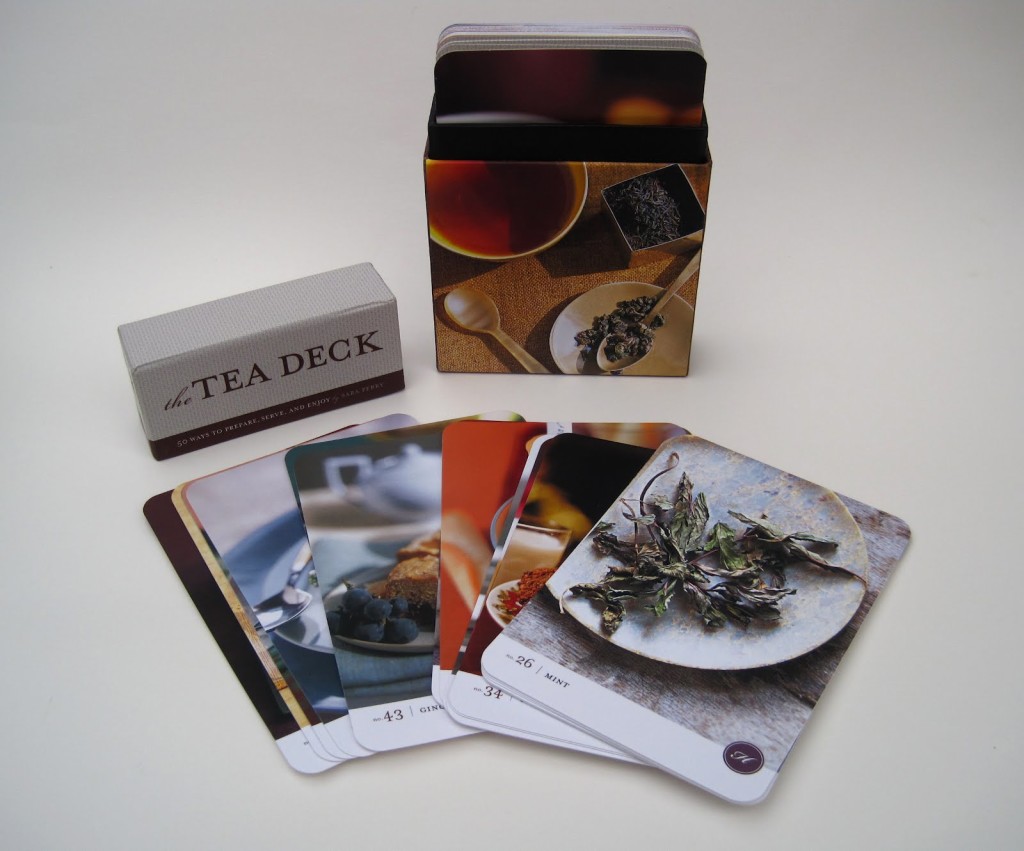 Presentation is important. It’s what catches our attention, induces us to pick up something (or someone). It’s the prequel to a relationship. It is a step that can be skipped, but people in the business of selling rarely do. As the now almost mythical door-to-door encyclopedia salesman knew, the opportunity to sell your product goes up exponentially once you’ve gotten it into the hands of a customer.
Presentation is important. It’s what catches our attention, induces us to pick up something (or someone). It’s the prequel to a relationship. It is a step that can be skipped, but people in the business of selling rarely do. As the now almost mythical door-to-door encyclopedia salesman knew, the opportunity to sell your product goes up exponentially once you’ve gotten it into the hands of a customer.
I find myself pondering presentation after receiving The Tea Deck because it is clearly designed to seduce a certain slice of the population. It comes in a slick box with one of those predictable foodie photos of a cup of tea and some tea leaves on a plate, ready to use. The back promises essential knowledge on tea varieties from across the globe and “. . .irresistible recipes for snacks and desserts that pair perfectly with tea.”
When I slid off the top and pulled the smooth deck of cards from it, I felt I held something very substantial in my hands. The anticipation was delightful — an attractive, solidly made box always lures out my inner Pandora! Tucked in the front is a folded brochure with a Tasting Terms Glossary, a few paragraphs telling you why tea is good for your health, instructions on preparing tea, a paragraph on the five Tea Categories, and a table of contents which informed me that 30 of the 50 cards examine a specific tea, and 20 offer recipes. This merely made me impatient. Eagerly I turned to the cards themselves.
The picture on each one is like the cover of a coffee table book with enticing textures and colors to show all the romance of tea. On the reverse side each tea card — grouped by category: black, oolong, white, green and herbal — provides helpful tidbits about the tea described, including Steep Time, Origin, Background, Taste, and a Tea Tip. The herbal tea cards are slightly different. They give the botanical name, Background, Parts Used for Brewing, Brewing Method, Taste, and Special Properties. Popular blends and scented teas are included.
Big as these cards are, there just isn’t room to give enough information to make them useful as a reference. And the text size throughout is a bit too small for comfortable reading. I wouldn’t suggest making the cards bigger — they’re already quite unwieldy — but the other option is reducing content, and there’s little enough of that as it is. A small font was the lesser of evils, I suppose.
The recipes are my favorite part of the deck. Each one has instructions for a bite sized snack to accompany tea time, along with several drinks, and Eye Love Tea Pillows to “Pamper and refresh weary eyes.” They all look delicious, and I’m particularly interested in trying out Chinese Tea Eggs and Tea Straws with Lemon Curd and Candied Ginger. Some of them seem a bit like filler. For instance, I could easily find a recipe for shortbread, scones, and muffins, all of which are fairly obvious choices to go with tea. My hope is that these will be unusually tasty versions.
Despite the recipes, I have to conclude that The Tea Deck is an experience, a confection to enjoy once. The beauty of the pictures and the expectation created by the format make it a nice respite from a busy day. As a gift, I’ll give it a couple of marks for that, but I can’t whole-heartedly recommend purchasing it unless you are brand new to tea. Even then, for the same suggested retail price of $14.99 you would learn a lot more about the many varieties of tea and its history from any number of books. The Tea Deck is available on Amazon as a Kindle book for less, but that would take away the fun of the box and the cards, leaving you with basically some brewing directions that probably come with your tea and a couple handfuls of recipes.
(Chronicle Books, 2008)
